Hike or cycle Clutha Gold Trail for an opportunity to connect with New Zealand’s gold-mining past. The Clutha Gold Trail connects with the Roxburgh Gorge Trail, two of New Zealand’s newer off-road trails for hikers and cyclists. Both follow the historic trails of Otago’s gold-mining era. Because one trail ends where the other begins, they can be combined to create a two-day or three-day adventure. In addition, their proximity to the Otago Central Rail Trail means that hikers and cyclists can experience even more of Central Otago’s impressive scenery.
Cycle Clutha Gold Trail
The three trails anchored several hiking and cycling adventures on a visit to New Zealand. We were a group of eight sexagenarians from Australia and Canada.
Bike It Now, a tour planner based in Clyde, set us up for four days of self-guided cycling of all or part of the three trails. The tour package included various tour planning services, including bike rentals, shuttle services, a jet boat transfer on the Roxburgh Gorge Trail, accommodation, and maps.
Clutha Gold Trail
The Clutha Gold Trail is markedly different from the Roxburgh Gorge Trail. Unlike the cycling path carved into the stark rocky landscape of the Roxburgh Gorge, the Clutha Gold Trail is a meandering 73-kilometre cycleway across the flat and undulating terrain of farmland and forests dotted with four settlements: Roxburgh, Millers Flat, Beaumont, and Lawrence.
(i) Roxburgh
After cycling the Roxburgh Gorge Trail, we overnighted in Roxburgh. Starting from our accommodation in Roxburgh translated into a 62-kilometre ride. While the Clutha Gold Trail can be completed in one day, we opted for a leisurely two-day ride — 43 kilometres from Roxburgh to Beaumont and 19 kilometres from Beaumont to the former gold-mining town of Lawrence. A shuttle service returned us to Clyde.
The fast-flowing Clutha Mata-au River remained our companion for the tree-lined Clutha Gold Trail down the picturesque Teviot Valley. It’s New Zealand’s largest river by volume. Known as Mata–au by the Māori and the English-language name of the Gaelic Cluaidh for the River Clyde in Scotland, the river attained dual-name status in 1998.
It was a comfortable ride, with easy climbs and shaded sections. The leaf-strewn trail weaves through the trees, hugging the Clutha Mata-au River before opening up into areas of lush green farmland.
The swiftest flowing river in New Zealand is quite wide in parts.
(ii) Millers Flat
We figured Millers Flat would be an ideal coffee stop halfway into the ride. With a population of 200, surely it would have a place to enjoy a coffee. As luck would have it, we found publican Mark McConway opening up the Millers Flat Hotel.
Mark gave us a tour of the pub through the old photographs adorning the walls.
(iii) Horseshoe Bend
A pastoral landscape dotted with grazing sheep greeted us at the former goldfield of Horseshoe Bend, six kilometres past Millers Flat. Built in 1913, the suspension bridge is a reminder that Horseshoe Bend was once an active gold-mining community with a population of several hundred people. Before the bridge was built, crossing the river was by boat or a chair suspended from a wire cable. A rope connected to the chair allowed passengers to pull themselves across the river, including children to travel to and from school.
From Horseshoe Bend, we took a brief detour up to The Lonely Graves. There are two graves, one of ‘Somebody’s Darling’ and the other of William Rigney.
According to popular legend, in 1865, William Rigney found a body washed up on a beach at Horseshoe Bend. He arranged the burial and soon after, marked the grave with a wooden headboard stating, “Somebody’s Darling Lies Buried Here.” It turns out that the only part of the story that was true was that Rigney and another miner put a manuka fence around the grave and erected the headboard. Nevertheless, the legend has persevered. When Rigney died in 1912, he was buried beside ‘Somebody’s Darling,’ and the words “here lies the body of William Rigney, the man who buried Somebody’s Darling” were placed on his gravestone.
The trail followed the river and offered plenty of variety. Sometimes we were beside the river. At other times, we looked down on it from higher points. The trail weaved among the trees and rose and dipped with the contours. The riding was delightful.
(iv) Beaumont
We overnighted at Melrose Cottages in Ettrick after being collected from the Beaumont Hotel. What a fantastic supper our hosts provided, sourced from locally produced fresh produce. It was hospitality at its finest.
Our hosts at Melrose Cottages, Peter and Perniella, gave us a tour of Ettrick before returning us to our bikes locked away in a shed in Beaumont.
It was an easy day of cycling, just 19 kilometres from Beaumont to the end of the Clutha Gold Trail at Lawrence.
From Beaumont, a steady climb took us away from the river to ascend to the highest point of the trail. It was made easier by walking our bikes through the Big Hill tunnel, an old railway tunnel 434 metres long, a remnant of the Roxburgh Branch railway line closed in 1968.
After the tunnel is an almost freewheeling descent to lush green farmland.
The scenery differed from that of the day before. The trail had veered away from the river, and we followed the highway part of the time, crossing it several times.
The scenery offered plenty of variety, including abandoned cottages beside the trail.
(v) Lawrence
Lawrence was Otago’s first gold-rush town. The community’s rich history is on display through its heritage buildings and gold-mining relics. It had been a good call to cycle the Clutha Gold Trail over two days which gave us several hours to explore the town.
The Bike It Now shuttle collected us in Lawrence for the return trip to Clyde. Our driver, Warren Lees, was a former wicketkeeper for New Zealand, so cricket dominated the conversation on the ride back to our vehicles and accommodation at the Antique Lodge Motel in Clyde.
The verdict?
Bike It Now’s knowledge of the trails and service providers translated into hassle-free cycling. The service was excellent.
While the Roxburgh Gorge Trail involved impressive scenery and a most enjoyable jet-boat shuttle, I appreciated the relaxed and leisurely ride along the Clutha Gold Trail. Both trails combine nicely to offer plenty of contrast.
If you found this post helpful, please share it by selecting one or more social media buttons. Have you hiked or cycled New Zealand’s Clutha Gold Trail? If so, what was your experience? Please share your thoughts in the comments. Thank you.
Is New Zealand on your travel list? Might you be interested in my other posts on New Zealand?
- Hike or cycle New Zealand’s Roxburgh Gorge Trail
- Hike or cycle New Zealand’s Otago Central Rail Trail
- For amazing scenery, cycle New Zealand’s Queenstown Trail
- Hike or cycle New Zealand’s Clutha Gold Trail
- The controversial story of New Zealand’s quirky bra fence
- While in New Zealand, don’t miss the dolphin-spotting dogs of Akaroa
- An extinct volcano and penguin conservation: hike New Zealand’s Banks Track
- The best way to see New Zealand’s Milford Sound
Care to pin it for later?

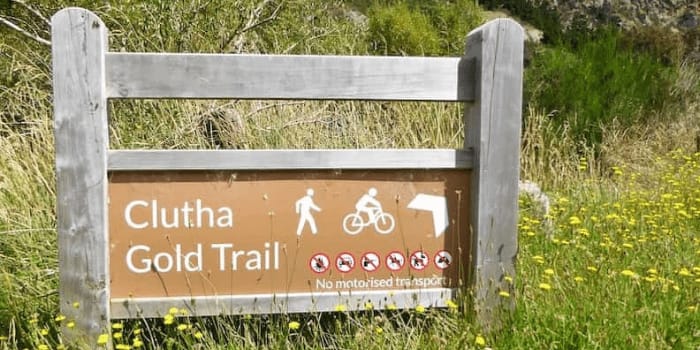
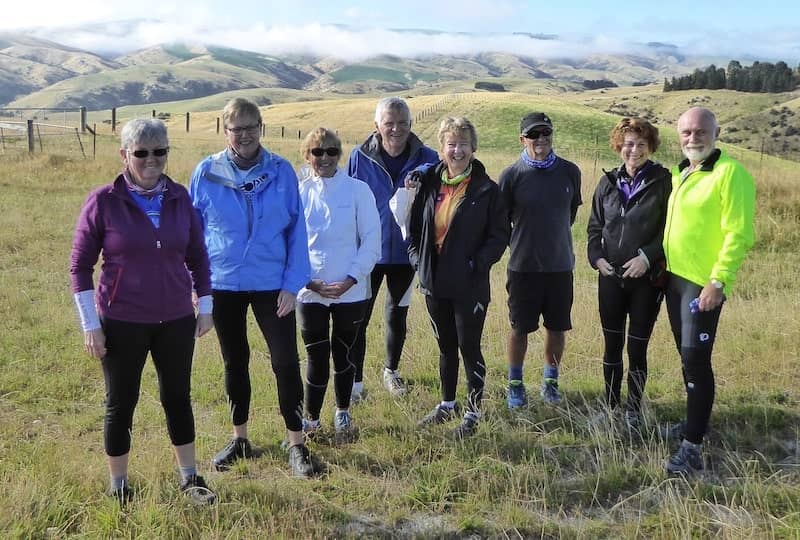
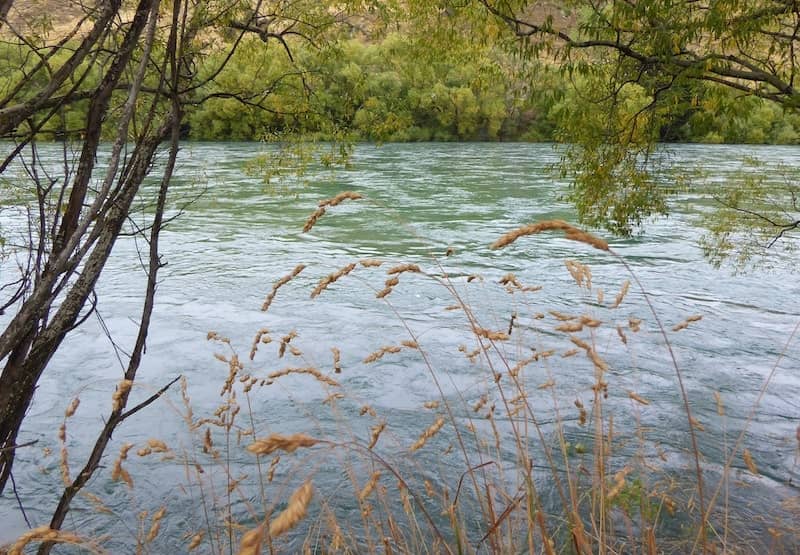
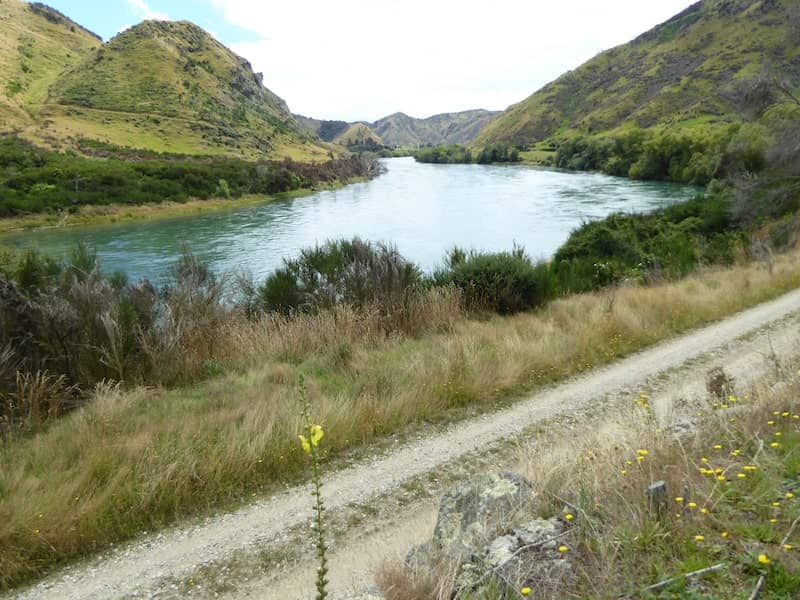
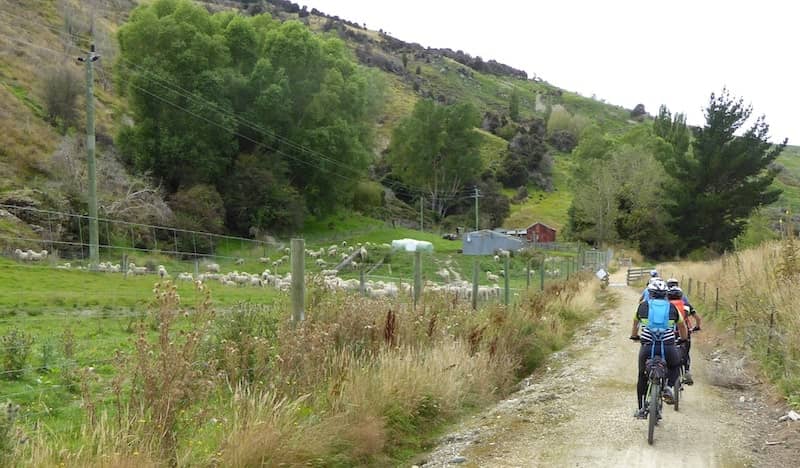
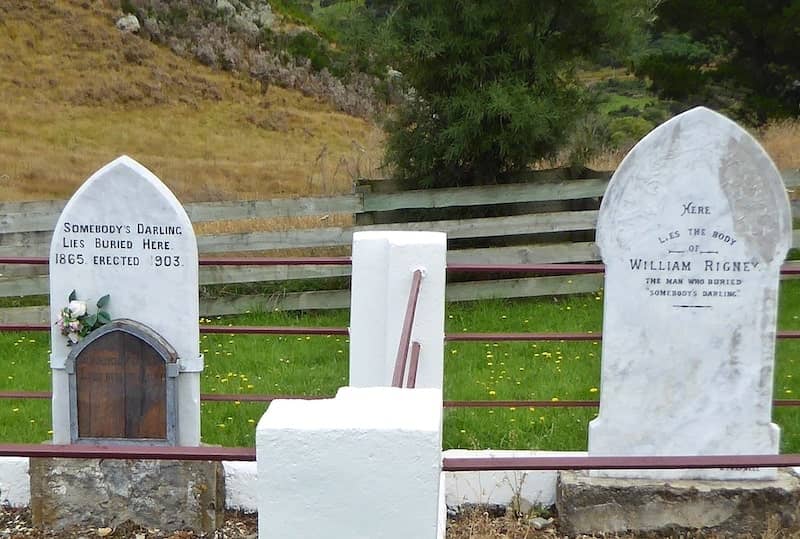
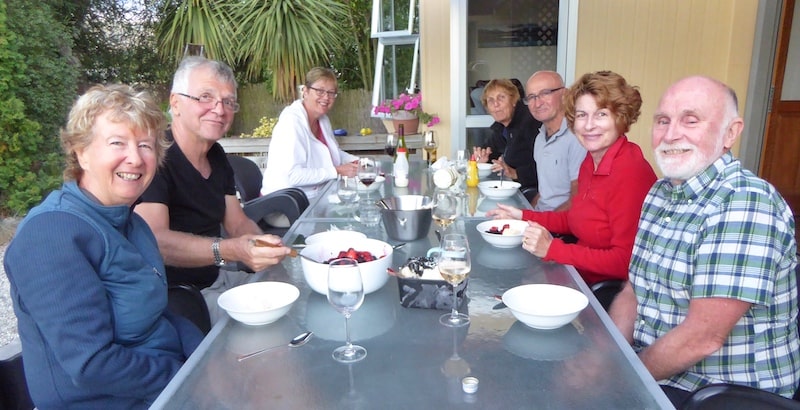
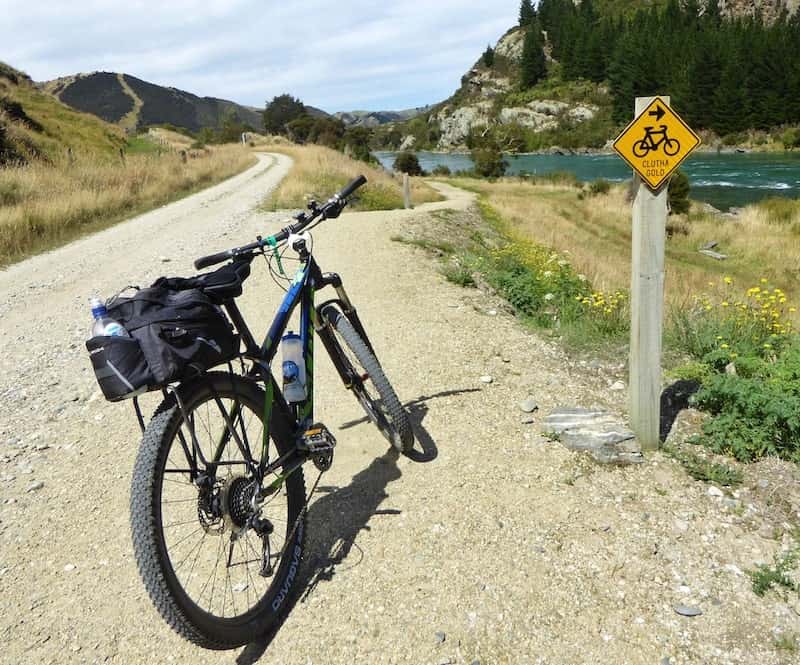
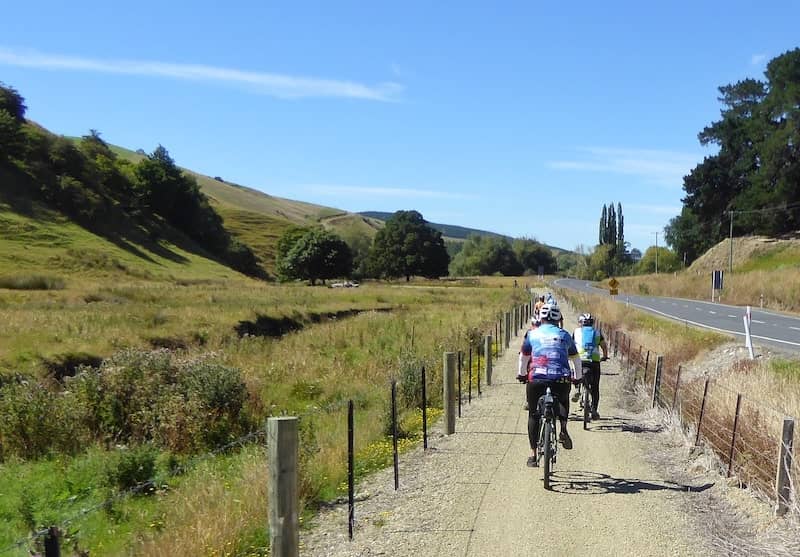
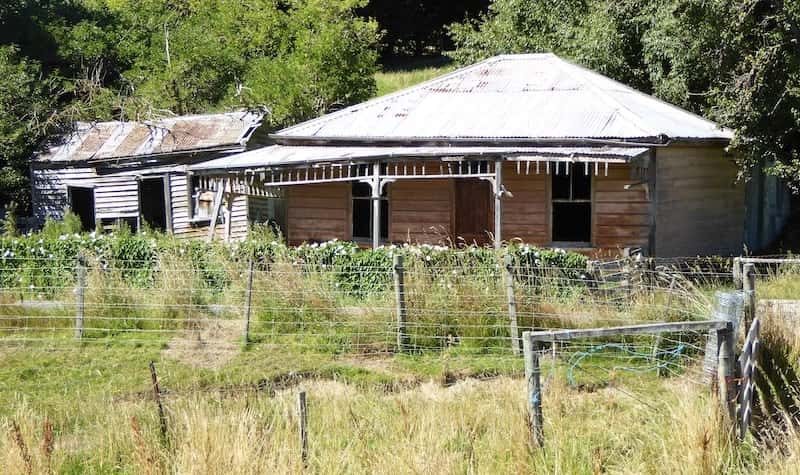
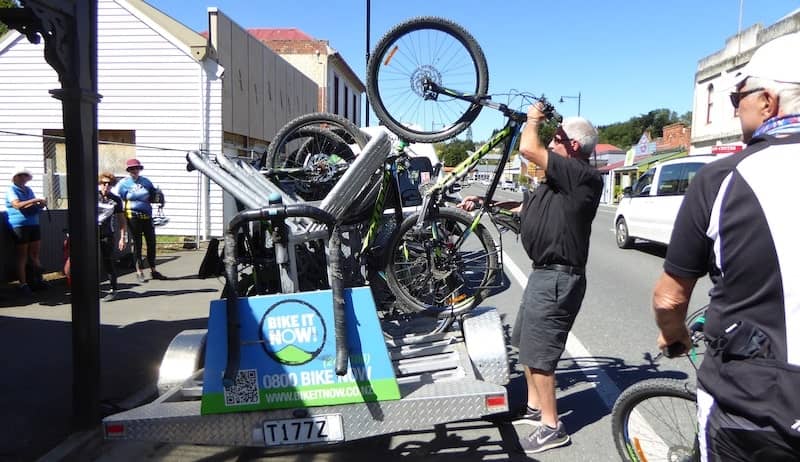
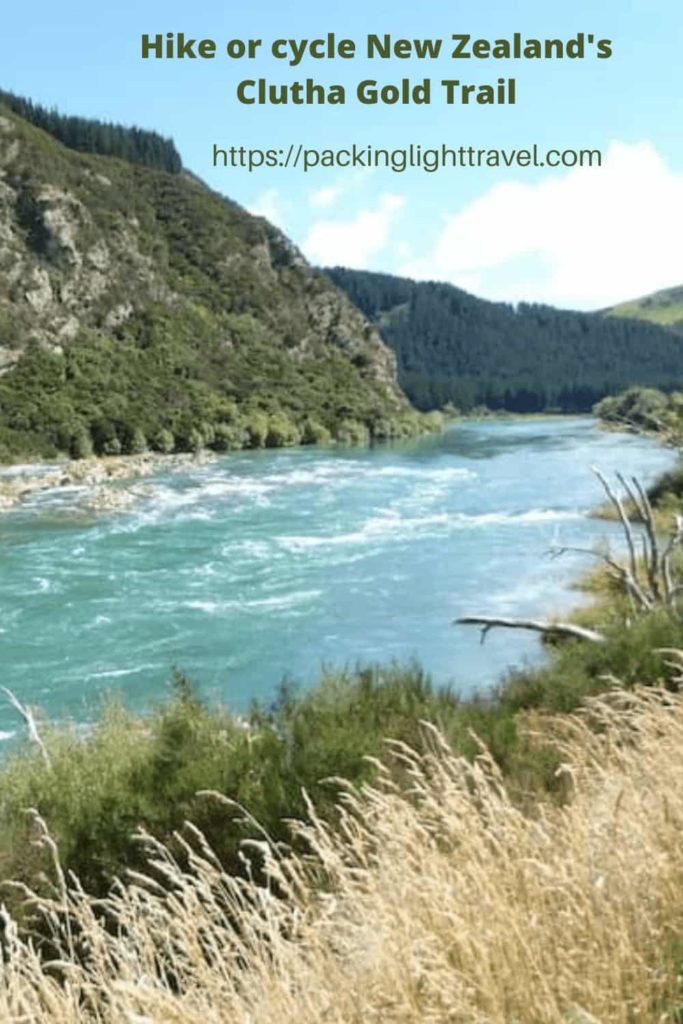




New Zealand is def on our travel bucket list. I would love to hike or cycle any of their trails!